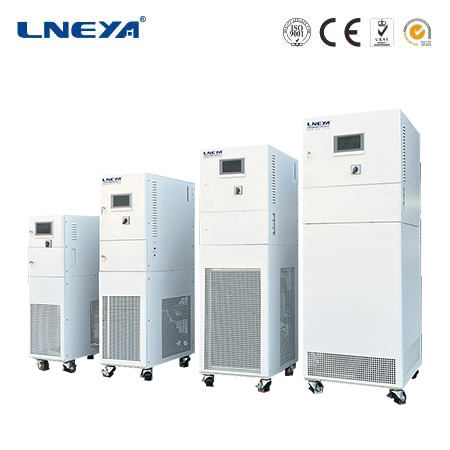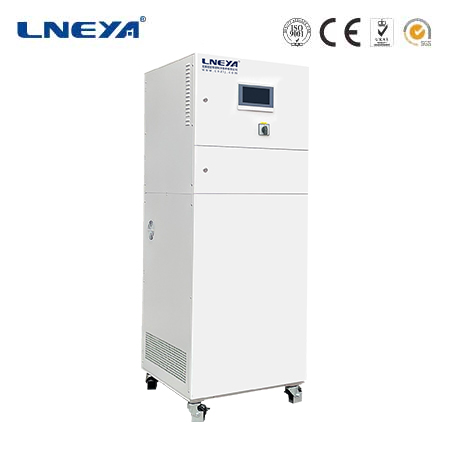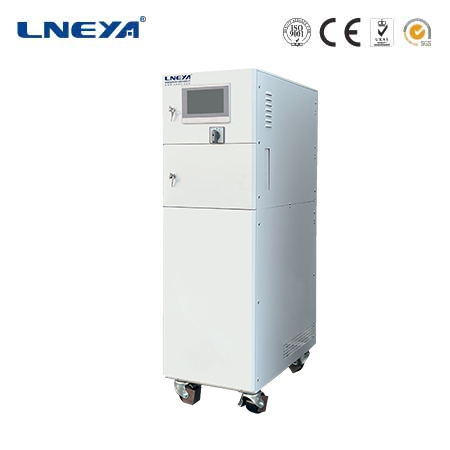coolant chillers
Coolant Chillers: A Comprehensive Guide
Coolant chillers play a vital role in maintaining the efficiency and reliability of numerous industrial, commercial, and technological processes. By effectively reducing the temperature of coolant fluids, these systems prevent overheating, safeguard equipment, and ensure the smooth operation of critical applications.

Definition and Basic Working Principle
A coolant chiller is a specialized cooling device designed to lower the temperature of a coolant, which is then used to remove heat from various sources such as machinery, electronic components, or industrial processes. The fundamental operation of most coolant chillers is based on heat transfer principles, with the goal of extracting heat from the coolant and dissipating it into the surrounding environment.
Vapor – Compression Cycle
The vapor – compression cycle is the most commonly employed mechanism in coolant chillers. It involves four main components: the compressor, condenser, expansion valve, and evaporator.
Compressor: The cycle initiates with the compressor, which increases the pressure and temperature of the refrigerant gas. As the gas is compressed, its energy rises, making it hot and highly pressurized.
Condenser: The hot, high – pressure refrigerant gas then proceeds to the condenser. In this component, the refrigerant releases heat to the external environment, typically through air – cooling or water – cooling methods. As heat is dissipated, the refrigerant condenses back into a liquid state.
Expansion Valve: The liquid refrigerant passes through the expansion valve, where its pressure drops significantly. This sudden pressure reduction causes the refrigerant to cool down and partially vaporize.
Evaporator: Inside the evaporator, the cold refrigerant comes into contact with the coolant. The coolant, which has absorbed heat from the system it is cooling, transfers this heat to the refrigerant. As the refrigerant absorbs the heat, it fully vaporizes and returns to the compressor, restarting the cycle. Through this continuous process, the coolant’s temperature is effectively lowered.
Absorption Cycle
Some coolant chillers operate on the absorption cycle. This cycle relies on a combination of a refrigerant (commonly water) and an absorbent (such as lithium bromide). Instead of mechanical compression, heat energy (usually from steam, hot water, or natural gas combustion) is used to drive the process. The refrigerant is evaporated, absorbed by the absorbent solution, and then separated again through the application of heat, allowing the cycle to continue. Absorption chillers are often used in situations where there is a readily available source of low – grade heat.

Types of Coolant Chillers
Compression Chillers
Reciprocating Chillers: Reciprocating coolant chillers utilize a reciprocating compressor, where a piston moves back and forth within a cylinder to compress the refrigerant. These chillers are suitable for small – to – medium – sized cooling applications. They offer good part – load efficiency, meaning they can operate efficiently even when not running at full capacity. However, due to their mechanical design with multiple moving parts, they tend to produce more noise and vibration and may require relatively frequent maintenance.
Scroll Chillers: Scroll chillers feature a scroll compressor with two interlocking spiral – shaped scrolls. One scroll is fixed, while the other orbits, creating a series of pockets that decrease in size to compress the refrigerant. They are known for their high efficiency, quiet operation, and long lifespan. Scroll chillers are commonly used in medium – sized commercial and industrial settings, such as office buildings, hotels, and light manufacturing facilities.
Screw Chillers: Screw chillers employ screw compressors with male and female rotors. As the rotors rotate, the space between them decreases, compressing the refrigerant gas. These chillers can handle large cooling capacities and are highly efficient, especially at part – load conditions. They are widely used in large commercial buildings, data centers, and industrial plants where significant cooling requirements exist.
Centrifugal Chillers: Centrifugal chillers use a centrifugal compressor that accelerates the refrigerant gas using a high – speed impeller. The centrifugal force generated increases the pressure of the gas. Designed for large – scale cooling applications, centrifugal chillers can manage extremely high cooling capacities. While they are highly efficient at full – load operation, their efficiency can decline at low – load conditions, although recent technological advancements have improved this aspect.
Absorption Chillers
Absorption chillers are advantageous in scenarios where there is an available source of waste heat, such as in industrial processes with excess heat generation or combined heat and power (CHP) systems. They can help reduce electricity consumption by utilizing heat energy instead of mechanical compression. However, they generally have lower coefficients of performance (COPs) compared to compression chillers, are larger in size, and require more complex maintenance due to the chemical processes involved.
Evaporative Chillers
Evaporative coolant chillers, also known as swamp coolers, work based on the natural process of water evaporation. They draw in warm air and pass it over water – saturated pads. As the water evaporates, it absorbs heat from the air, cooling it down. The cooled air is then used to cool the coolant indirectly. Evaporative chillers are highly energy – efficient, especially in dry climates, as they rely on the latent heat of evaporation rather than mechanical refrigeration. However, their effectiveness decreases in humid environments, and they can add moisture to the air, which may limit their use in some applications.
Components of Coolant Chillers
Compressor (for compression chillers)
The compressor is the heart of vapor – compression coolant chillers. Its role is to increase the pressure and temperature of the refrigerant, driving the flow of refrigerant through the system. Different types of compressors, as described above, have varying characteristics in terms of efficiency, capacity, noise levels, and maintenance requirements.
Condenser
The condenser is responsible for transferring the heat absorbed by the refrigerant to the external environment. In air – cooled condensers, ambient air is used to cool the refrigerant, making them suitable for installations where water supply for cooling is limited. Water – cooled condensers, on the other hand, use water as the cooling medium, offering higher heat transfer efficiency and often being used in large – scale industrial applications or where water is readily available.
Evaporator
The evaporator is where the heat transfer from the coolant to the refrigerant occurs. It can be designed in various forms, such as shell – and – tube, plate – type, or coil – type, depending on the specific application requirements. The design of the evaporator affects the rate and efficiency of heat transfer between the coolant and the refrigerant.

Expansion Valve
The expansion valve regulates the flow of refrigerant into the evaporator and reduces its pressure. This pressure drop is crucial for the refrigerant to absorb heat effectively in the evaporator. There are different types of expansion valves, including thermostatic expansion valves and capillary tubes, each with its own operating characteristics and suitability for different chiller applications.
Coolant Pump
The coolant pump circulates the coolant through the system, ensuring that it flows through the equipment or processes that need cooling and then back to the chiller for temperature reduction. The pump’s flow rate and pressure capabilities must be matched to the requirements of the cooling system to ensure proper coolant circulation.
Control Systems
Modern coolant chillers are equipped with advanced control systems. These systems include temperature sensors that monitor the temperature of the coolant and the refrigerant, pressure sensors to detect any abnormal pressure changes, and flow sensors to ensure proper coolant and refrigerant flow. The control system uses the data from these sensors to adjust the operation of the chiller components, such as the compressor speed, fan speed, and coolant flow rate, to maintain the desired coolant temperature and ensure the efficient and safe operation of the chiller.
Applications of Coolant Chillers
Manufacturing Industry
In manufacturing, coolant chillers are used to cool a wide range of equipment. For example, in metalworking, they cool cutting tools to prevent overheating, which can affect the quality of the cut and the lifespan of the tools. In plastic manufacturing, coolant chillers maintain the temperature of injection molding machines, ensuring consistent product quality by preventing warping and other defects caused by temperature fluctuations. They are also essential in chemical plants for cooling reactors and other equipment involved in chemical processes to maintain the correct reaction conditions and prevent hazardous situations due to overheating.
Data Centers
Data centers house a large number of servers and other IT equipment that generate substantial heat. Coolant chillers play a vital role in maintaining the optimal temperature and humidity levels to prevent server failures and data loss. High – efficiency coolant chillers are often preferred in data centers to minimize energy consumption and operating costs while ensuring reliable performance. They cool the coolant used in cooling systems that circulate around the servers, effectively removing the heat generated by the equipment.
Healthcare Sector
Hospitals, clinics, and laboratories rely on coolant chillers for various applications. They are used to cool medical imaging equipment, such as MRI machines, CT scanners, and X – ray machines, which generate a significant amount of heat during operation. Proper cooling is essential to ensure the accurate and reliable functioning of these devices. Additionally, coolant chillers maintain the correct temperature for storing vaccines, blood products, and other biological samples, ensuring their viability and efficacy.
Electronics Industry
In the electronics industry, coolant chillers are used to cool electronic components during manufacturing processes, such as semiconductor fabrication. Precise temperature control is crucial for the quality and performance of electronic devices. Coolant chillers also cool the components in finished electronics products, such as high – performance computers and servers, to prevent overheating and extend their lifespan.
Automotive Industry
In automotive manufacturing, coolant chillers are used in various processes, including the cooling of injection molding machines for plastic parts production and the testing of engines and other automotive components. They also play a role in the development and testing of electric vehicle batteries, where maintaining an optimal temperature is essential for battery performance and longevity.
Factors to Consider When Choosing a Coolant Chiller
Cooling Capacity
Determining the appropriate cooling capacity is crucial. It depends on factors such as the heat load of the equipment or processes being cooled, the ambient temperature, and the required temperature drop of the coolant. Oversizing the chiller can lead to unnecessary energy consumption and higher costs, while undersizing it may result in insufficient cooling and equipment malfunction. Manufacturers typically provide guidelines on how to calculate the required cooling capacity based on specific application requirements.
Energy Efficiency
Energy – efficient coolant chillers can significantly reduce operating costs over time. Look for chillers with high COP ratings or those that comply with energy – saving standards. Some chillers also come with features like variable – speed drives, which adjust the chiller’s operation based on the cooling demand, further enhancing energy savings. Choosing an energy – efficient chiller not only helps in cost – reduction but also contributes to environmental sustainability.
Type of Chiller
Select the type of coolant chiller based on the specific application requirements. Consider factors such as the available energy sources (e.g., electricity, waste heat), the scale of the cooling requirement, the environmental conditions, and the need for precise temperature control. For example, if there is a readily available source of waste heat, an absorption chiller may be a suitable option. In a dry climate, an evaporative chiller could offer energy – efficient cooling.
Coolant Compatibility
Ensure that the chiller is compatible with the type of coolant being used. Different coolants have different properties, such as freezing point, boiling point, and chemical composition. The chiller’s materials and components should be able to withstand the coolant without corrosion or degradation. Some coolants may require specific chiller designs or additional precautions to ensure proper operation.
Maintenance Requirements
Regular maintenance is necessary to ensure the optimal performance of coolant chillers. Some chillers may require more frequent servicing or have higher maintenance costs due to their complexity. When choosing a chiller, consider the availability of spare parts, the expertise required for maintenance, and the manufacturer’s support services. A chiller with easy – to – access components and a straightforward maintenance procedure can reduce downtime and maintenance costs.
Noise Level
In applications where noise is a concern, such as in offices, hospitals, or residential areas adjacent to industrial facilities, the noise level produced by the chiller during operation should be considered. Some chillers are designed to operate quietly, while others may generate more noise, especially those with larger compressors. Choosing a low – noise chiller can help create a more comfortable working or living environment.
In conclusion, coolant chillers are essential for maintaining the proper temperature of coolant fluids in a wide range of applications. Understanding their types, working principles, components, applications, and selection criteria is crucial for businesses and institutions to ensure efficient, reliable, and cost – effective cooling solutions. By carefully considering these aspects, users can select the most suitable coolant chiller for their specific needs and optimize the performance of their cooling systems.
Related recommendations
thermal oil heating system
220Thermal Oil Heating Systems: A Comprehensive OverviewI. IntroductionA thermal oil heating system is a closed - loop system that utilizes thermal oil (also known as heat - transfer oil) as the medi...
View detailscirculation heater
164How Circulation Heaters WorkCirculation heaters operate on the principle of heating a fluid as it continuously flows through the heater. The basic structure typically consists of a heating elemen...
View detailslaboratory cooling equipment
65Laboratory cooling equipment is a category of specialized devices engineered to create and maintain controlled low-temperature environments, essential for preserving samples, enabling chemical rea...
View detailsportable industrial chiller
231Portable Industrial Chiller: Detailed Explanation Introduction to Portable Industrial ChillersPortable industrial chillers are complete refrigeration systems packaged in mobile enclosures desi...
View details
 LNEYA Thermal Test Chillers
LNEYA Thermal Test Chillers






HelloPlease log in